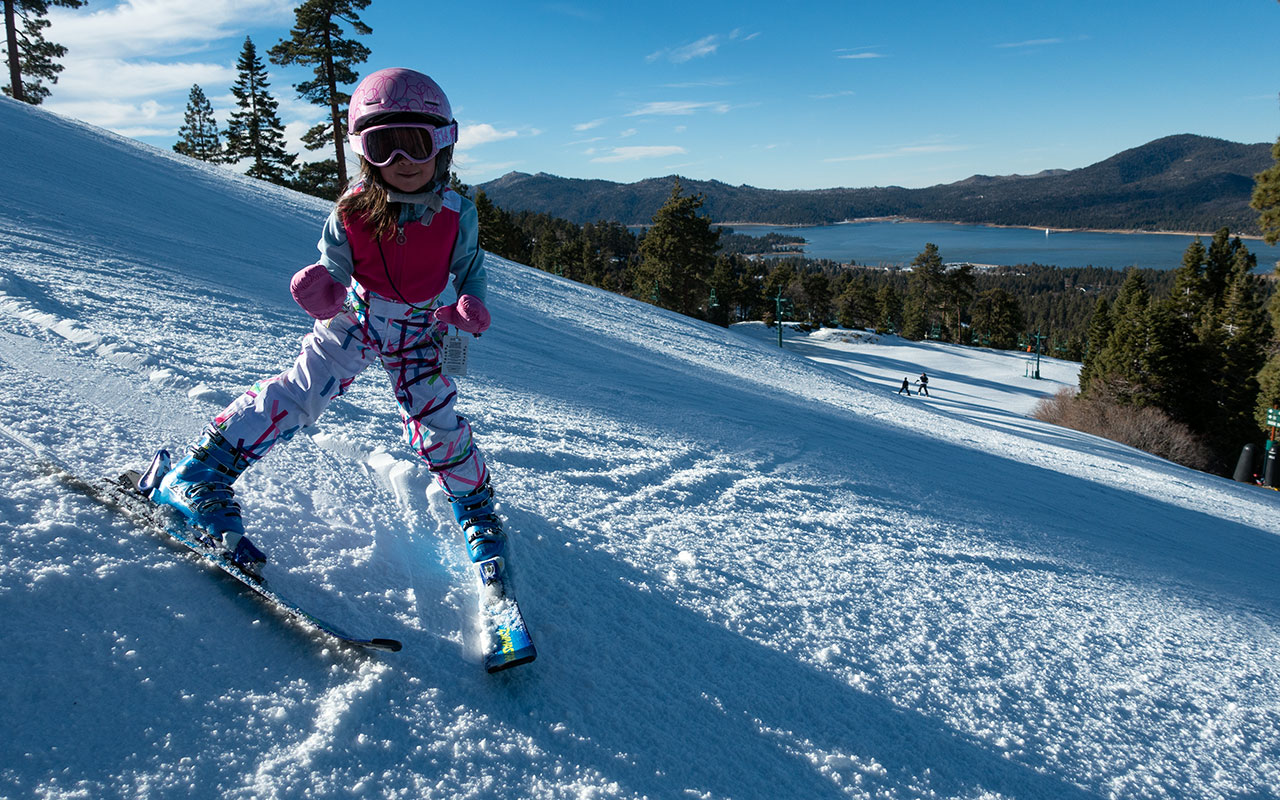Kids: The Snowplow Returns

As parents we are oh-so-sensitive to regression. We fight tooth and nail for every scrap of developmental progress, be it reading, eating with utensils, escaping diapers, or not drawing on walls, and when those inevitable moments of regression shatter our complacency, our sense of loss and even outrage can be overwhelming.
Prepare yourself, then, for the inexplicable yet also potent blood-boil you may feel when your young ripper, seemingly well on their well to mastering intermediate or even advanced ski technique, suddenly reverts to a snowplowing-snail of a beginner. Take a deep breath, take a look around, and then take action.
The irony, of course, is that the snowplow (or, to use the technical vernacular, the "pizza shape") is one of the very first things we teach our kids. We give them the snowplow, and then we immediately try to take it back. We give them the snowplow because it is the very easiest way to turn, slow down, or stop. We take it away because it is also the very worst.
You should be aware, then, that reversion to a snowplow is a clear indicator your child, for whatever reason, is feeling intimidated. Take a look at the snow: is it icy today? Take a look at the hill: is it steeper than you're giving credit? Simply finding easier ground is always a sound strategy when your child is struggling.
I believe there is also a developmental component. Snowplows returned with a vengeance in both my kids right around the same age. I speculate this corresponds to a heightened sense of risk: as they get older, their advancing brains are better able to appreciate the inherent wackiness of strapping slippery sticks to your feet and standing atop icy mountains.
Let's look at the picture of my daughter above to see why the snowplow can be so problematic (this also applies to adults). Take a look at her uphill ski, and notice how it is edging in a way that pushes her off her downhill edge, releasing her from the snow. If she is initiating a turn, all is well: this is exactly what we want to happen.
The problem comes when the snowplow gets locked in. In this case, our not-so-benign pizza shape creates a feedback loop: as the child gets scared, she increasingly tries to use a snowplow to regain a sense of control, which then reduces her security, which increases her fear, which intensifies the snowplow...and so on.
Note that we're not trying to get rid of snowplows entirely. On steeper pitches we want to see a momentary snowplow, executed as part of each turn, which smoothly resolves into parallel skis as the child finishes the turn and traverses ("french fries") across the hill. The healthy pattern is "pizza" "french fries" "pizza" "french fries".
Unhealthy (in skiing as in life) is when it's all pizza, all the time.
Happily, there is a simple and effective exercise you can use to help your child escape a locked-in snowplow. First, you need to find terrain where their fear level is manageable. Short (and I mean short!), relatively steep pitches are ideal. This might be, for example, a headwall* on a green run—someplace where there is no sense of dangerous exposure.
On the short, steep pitch, teach your child to stomp their uphill foot three times while traversing between turns. Have them count: "one, two, three, TURN". Demonstrate it yourself so they see exactly how it works. By stomping, you are lifting your uphill foot, which shifts weight to the downhill ski (where it belongs) and which breaks the snowplow.
When done properly, the effect can be magical: the child experiences a surge in security as the downhill ski, properly weighted, grabs hold, and the uphill ski no longer pushes them downward. This exercise should be accompanied by the mantra that we make turns, not snowplows, to ski. The child must learn, contrary to instinct, that turns—not snowplows!—are what make us safe.
*NOTE: Be sure, when doing any sort of exercises on headwalls, that you and/or your child are visible to uphill traffic at all times to reduce the chance of a collision.
— January 12, 2015
Andy Lewicky is the author and creator of SierraDescents